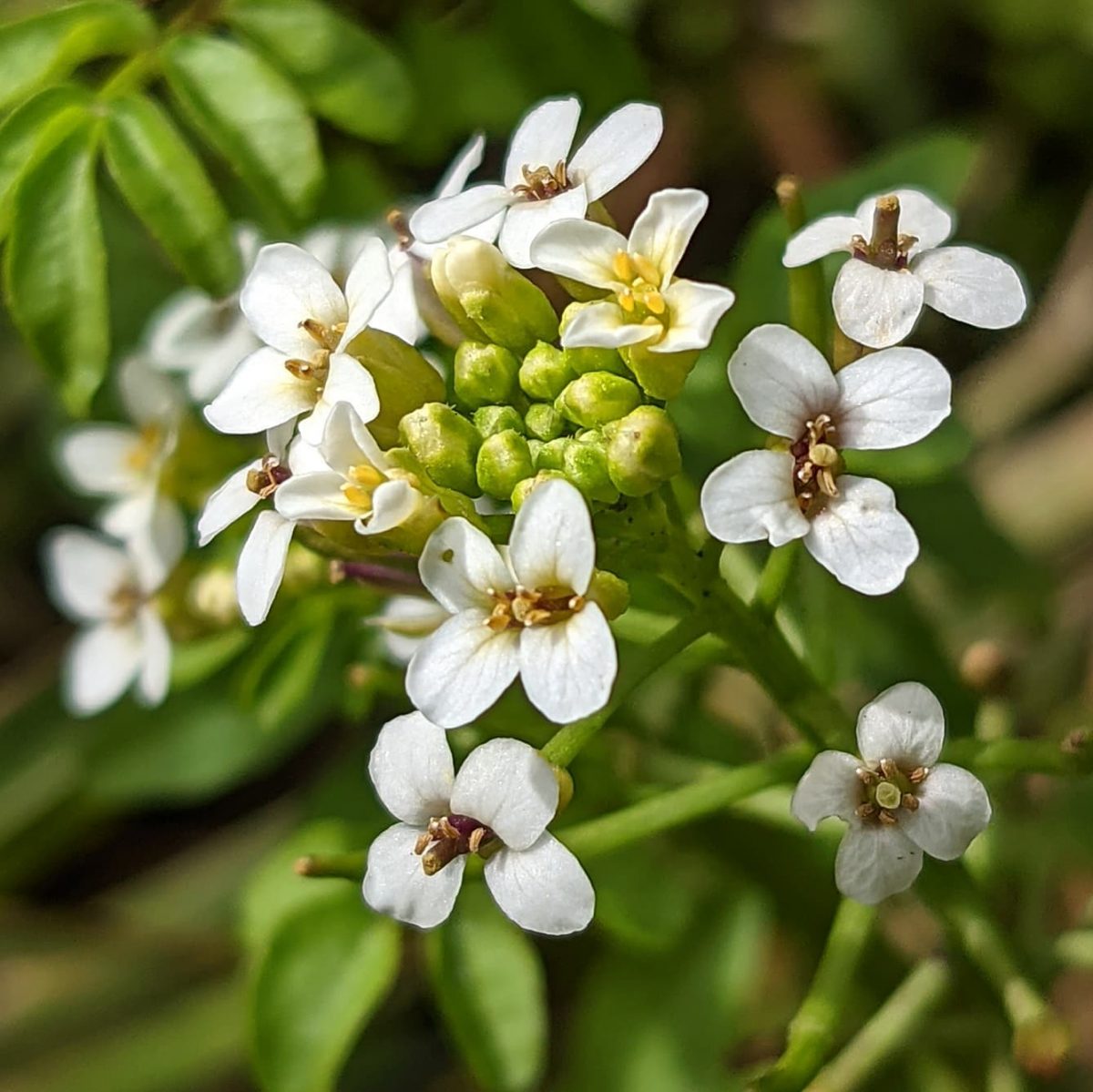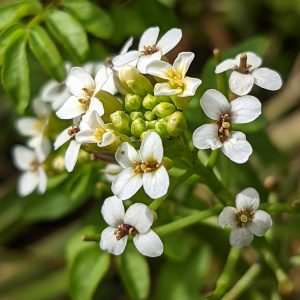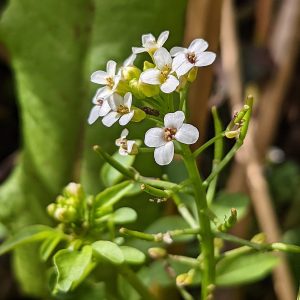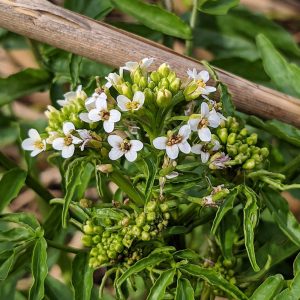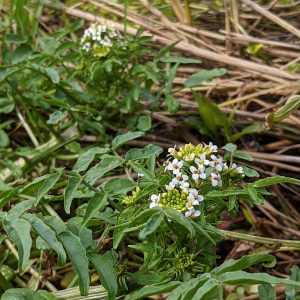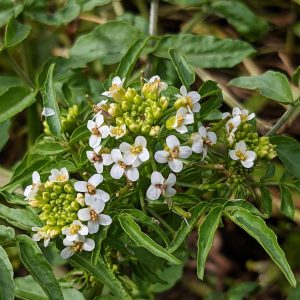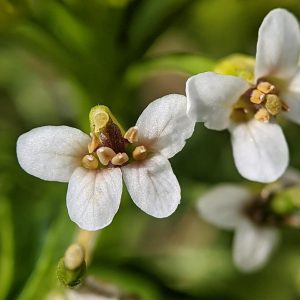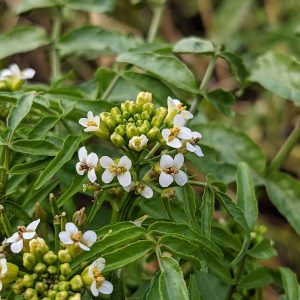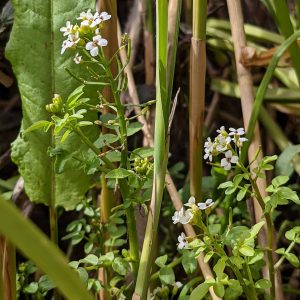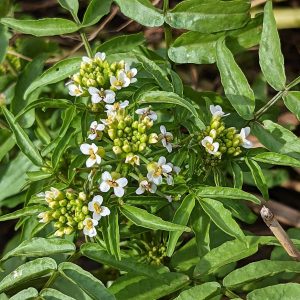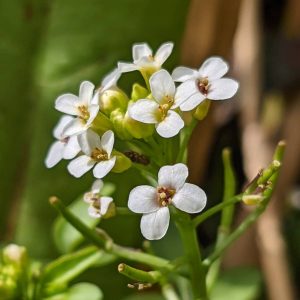Watercress (Nasturtium officinale), a feet-wet Eurasian perennial introduced intentionally to Australia.
Watercress had not found popularity on the English table at the time of the Sydney invasion, however by the mid-1800s the GWR was said to carry 1 t of the plant into London every week. Punch co-founder Henry Mayhew wrote a detailed account of a trade that relied on hundreds of impoverished sellers, each collecting a few pennies worth of product from the cress market before fanning out across the city at dawn to hawk the plant as a breakfast green.
This sudden popularity was noted with some unease in the colonies. An 1827 Hobart Town Courier columnist complained of the new fashion for a plant that ‘of all salads… [is] the most unwholesome… cold, watery and not very savoury.’
The ‘fad’ reached the Australian colonies anyway. An 1833 sale listing of a two-acre cottage property at Parramatta noted among its garden features ‘two watercress beds’.
One correspondent reported that Watercress had ‘completely naturalised’ on Perth’s Swan River by 1843, less than 15 years after the colony’s establishment, and that in a brook at Augusta, ‘there [was] now enough of that delicious vegetable to supply the largest fleet in the British Navy.’
In Victoria, von Mueller advertised a supply of Watercress seeds for distribution in the 1859 Government Gazette, and organised to have some sown within the Yan Yean system, where luckily it didn’t take. It soon emerged that New Zealand’s rivers were being choked by the plant; at one point, the supply of drinking water at Christchurch was threatened.
Undaunted, the Geelong Advertiser reported favourably in 1866 that ‘a party of pedestrians who made a tour [of] the Australian Alps… systematically scattered in likely spots some loose seeds of several kinds of flowers… they are now rewarded by the assurances that the violet and the watercress have been thoroughly established along the line of their route.’
The photographed plants were found on the mud flats and minor channels in the Merri Creek above Galada Tambore.
View Original Post on Instagram
Search for information about Nasturtium officinale in the Flora of Victoria
View information and occurrences of Nasturtium officinale on the Atlas of Living Australia
